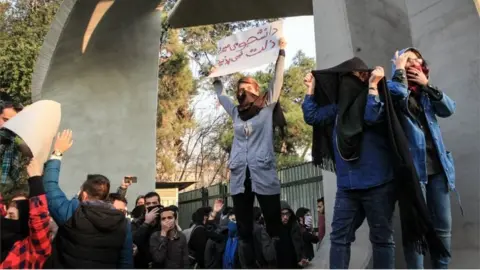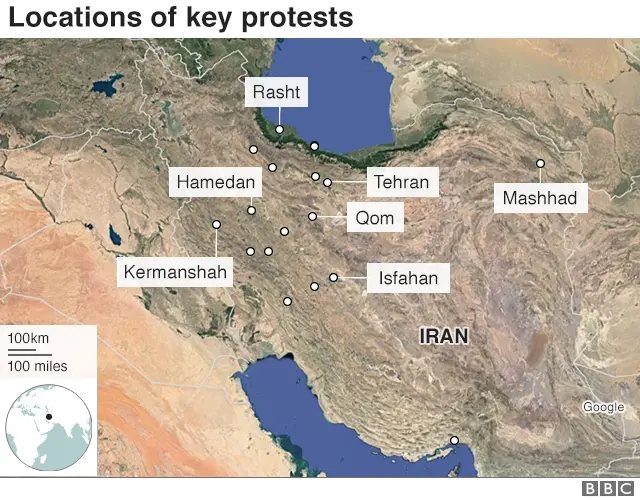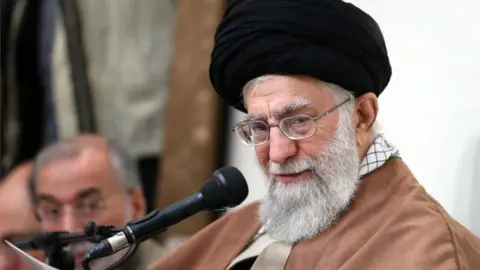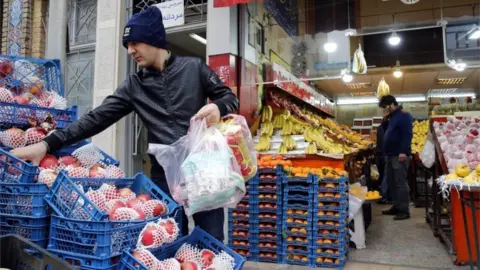Iran protests pose an unpredictable challenge for authorities
 EPA
EPAAfter nearly a week of rare protests in Iran, it is clear momentum is building.
Despite restrictions placed on social media, demonstrators are still taking to the streets and tensions remain high.
The protests are the largest since the 2009 uprising over the disputed presidential election. That time the security forces cracked down hard, and they have threatened to do so again.
The current demonstrations began in Mashhad, Iran's second most populous city, and home to the shrine of a major figure in Shia Islam.
Ahmad Alamolhoda, the leader of Friday prayers in Mashhad and a hard-line cleric close to the supreme leader, is accused of encouraging his supporters to protest against President Hassan Rouhani, a political opponent.
Initially, slogans were against inflation, corruption and the president's economic policies. However, what followed took many politicians by surprise.

The protests against the president quickly turned into rallies against the country's clerical leaders. Slogans of "Death to Rouhani" gave way to "Death to Khamenei", Iran's supreme leader.
Within a day, the unrest had spread to some 25 towns and cities, and slogans went beyond the economic, including calls, for instance, for an end to Iran's involvement in Lebanon and Syria.
Range of grievances
Unlike the post-election rallies of 2009, which had well-known leaders and clear demands, and were mainly supported by more urban, middle class residents of the capital, Tehran, and a few other cities, the latest protests are happening in poorer parts of the country.
Analysts see the latest outbreak as more grassroots in nature, so less predictable.
There is no clear leader and they are fuelled by anger over inflation, unemployment and corruption of the political elite.
 AFP
AFPThe security forces are, so far, showing some restraint. In a video that went viral, a woman can be seen shouting "Death to Khamenei" at officers while they look on.
On Sunday, three days after they began, President Rouhani went on television to defend his policies but also acknowledge the economic grievances of the protestors.
"The economy is in such a dire state that President Rouhani's minor achievements don't make much of a difference," says Reza Ansari Rad, a journalist based in Tehran.
According to Abdolreza Rahmani Fazli, Iran's Interior Minister, the unemployment rate in some parts of the country is over 60%.
Cash cuts
Although President Rouhani, elected for the second time last May, pledged to revive the economy, he has not been able to deliver much, leaving many Iranians frustrated.
Last month, the president released details of next year's budget, which calls for an increase in fuel prices and a cut in cash subsidies.
 EPA
EPAIt also became clear that the already huge budget of numerous religious organisations will be increased, something over which Mr Rouhani does not appear to have any control.
The above, combined with a recent 40% increase in the price of eggs, one of the principal foods of the working class, has put extra pressure on the poorer parts of the Iranian population.
President Rouhani has downplayed the protests, saying the demonstrators were in a minority.
But some analysts say that four decades of mismanaging the country has left many Iranians hungry for change.
